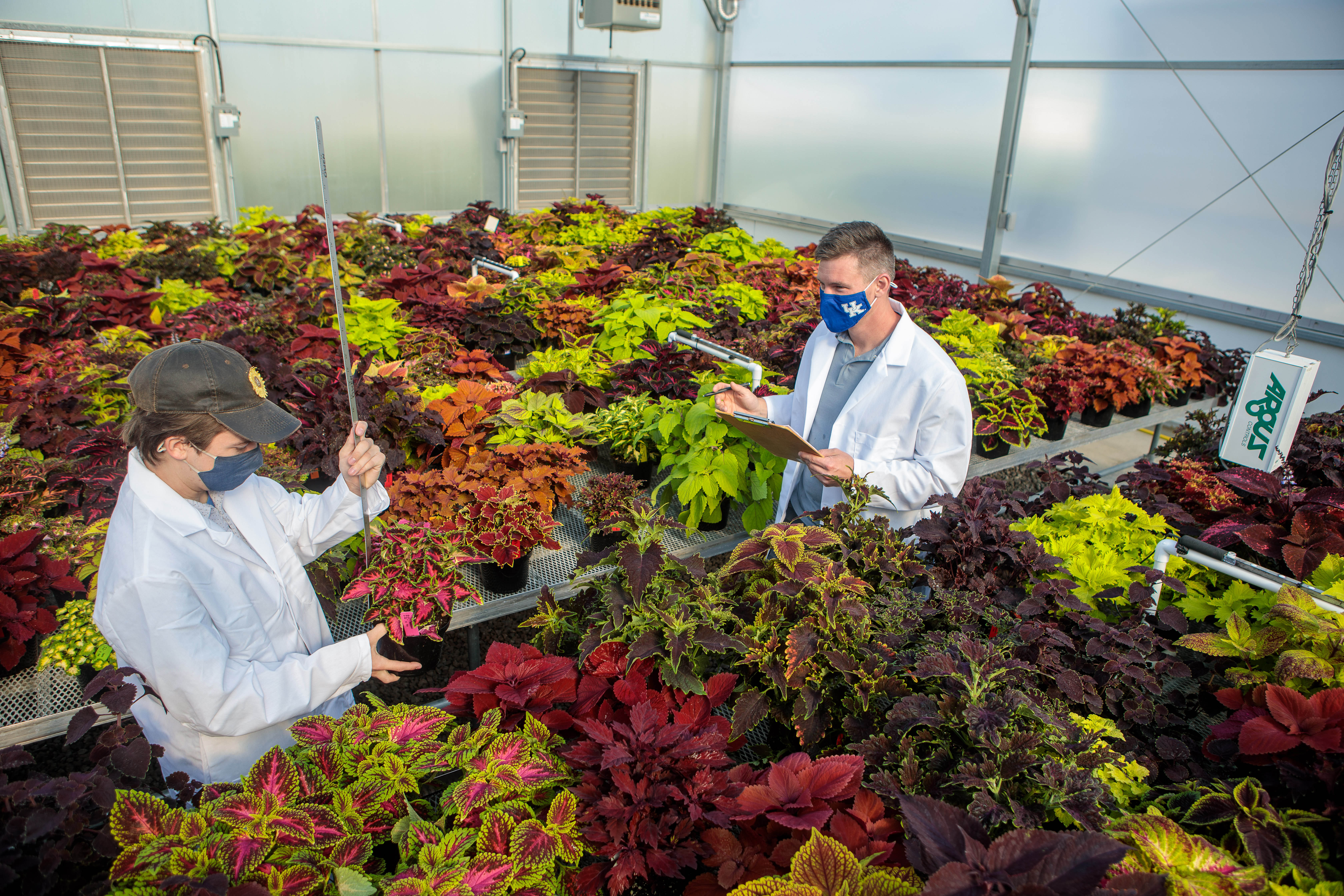That coleus you just bought has science behind it
That coleus you just bought has science behind it

LEXINGTON, Ky., — Coleus, the common bedding plant that supplies splashes of colored foliage to summer gardens and containers, often follows a path from mother plant to landscape that assures the best choice for consumer dollars and growers’ profits. Horticultural scientists at the University of Kentucky and North Carolina State University contributed to that journey this spring through cultivar trials.
In a greenhouse at the UK College of Agriculture, Food and Environment’s Horticultural Research Farm, 111 cultivars of coleus grew lush this spring under the careful watch of assistant horticulture professor Garrett Owen, undergraduate student Ty Rich and doctoral graduate student Paul Cockson. The variety trial evaluated cultivars for overall performance and assessed their growth, architecture, color, leaf form and structure, and crop timing. The research plants ranged from trailing cultivars to those that formed tall, upright structures and included at least seven color groups. Ball Horticultural Company, Danziger, Proven Winners, Dümmen Orange and North Carolina Farms donated uprooted cuttings that were propagated in the Controlled Environment Horticulture research unit that Owen leads.
“We looked at what the suppliers deemed were their most popular varieties, so we could provide growers and consumers research-based varietal information,” Rich said.
Owen said it’s important for their research to help growers, providing cultural information from a scientific standpoint that will let growers determine the cultivars best suited for their operations, production system and market.
From a greenhouse grower aspect, bench space is money. The more plants they can fit on a bench or on the ground, the more money they can make. For that reason, the team identified those plants that are more vigorous, so if necessary, growers can apply plant growth regulators to keep them more compact to conserve on bench space and shipping.
The team also sampled and analyzed leaf tissue to create nutrient sufficiency ranges in coleus. This procedure will establish the largest collection of leaf tissue nutrient sufficiency ranges for coleus by cultivar. If a grower has a nutritional problem, they can submit their leaf tissue to an analytical lab to have the nutrient content analyzed. With these cultivar-specific leaf tissue ranges, growers and Cooperative Extension agents will have species- and cultivar-specific tissue values to compare and make fertility adjustments as needed. Their trial also will identify if leaf tissue nutrient content is influenced by leaf color.
Rich is interested in greenhouse controlled-environment production and plant genetics, so this was an ideal research study for him to lead.
“It’s a great way to see the different genetics across a species,” he said. “Being able to take on a study of this scale, knowing the impact it can have on growers in the state, has been really exciting. I look forward to communicating these results to the floriculture industry and the scientific community.”
Horticulture Research


